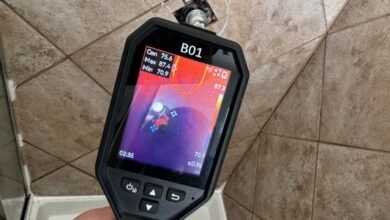
-Are you dealing with signal transmission or wireless network equipment? One of the key components in these devices is high frequency PCB.
These circuits are also important in electronic devices such as mobile phones because they are responsible for data transmission.
We introduced these PCBs in detail below, including High -Frequency design, so please continue to read and learn more.
-What is a High-Frequency PCB board?
Generally speaking, high -frequency high -speed PCB boards refer to printed circuit boards above 1GHz, which may be different in the industry. Its physical performance, accuracy, and technical parameters are very high. They are often used in the fields of communication systems, car ADAS systems, satellite communication systems, and radio systems. But what’s the difference between HDI PCB and normal FR4 PCB. There are high -frequency signal lines on the board or most of the PCB with high -frequency cables as high frequency boards; HDI board refers to a relatively dense line in PCB, mainly such as mobile phones and computer motherboards such as PCB. PCB is now developing in this regard. Ordinary double-sided PCB mainly mean that there are no special types of boards and signals.
High frequency (HF) PCB is used to transmit electromagnetic waves at the frequency of GHz. In various applications, the loss in various applications, including mobile, microwave ovens, radio frequency (RF), and high -speed design applications. Therefore, a printing circuit board with certain features is used to transmit these electromagnetic waves. When designing PCB for high-frequency applications, several parameters were considered.
When special signal requirements are included in your electronic equipment and products, high-frequency PCB can meet your needs. These higher transmission frequencies can support faster signal flow, which is necessary in today’s increasingly complex electronic switches and other components.
The increase in the complexity of electronic components and switches continues to require a faster signal flow rate, thereby higher transmission frequency. Because the pulse of electronic components is short, high-frequency technology is also necessary to regard the width of the conductor/track as an electronic component. According to various parameters, high-frequency signals are reflected on the printing circuit board, which means that the impedance must be specified accurately and implemented at the highest process control level.
-How to choose PCB materials for High -Frequency applications?
The PCB laminate material you choose for PCB building is essential for the overall function and lifespan of the final product. When the operating frequency enters the microwave oven and even the RF frequency (RF) region, your PCB laminate material selection will have a significant impact on the overall loss of the finished PCB after PCB assembly and final assembly. When determining the best material suitable for High-Frequency PCB manufacturing, you must carefully consider electrical, heat and mechanical properties.
In high frequency design, you may find that FR4 sometimes does this job just at certain higher frequencies. It’s obviously you choose the wrong PCB material. In high frequencies, FR4’s main attention is its relatively high dielectric constant (DK), which is generally considered to be about 4.2. In terms of hybrid structure, FR4 can still be used as a suitable laminate material for High-Frequency PCB, when it comes to a hybrid construction, in which the fabrication is combined with high frequency laminate. At HITECH Circuits, we carry a series of specially designed materials to maintain signal integrity in the radio frequency and microwave regions.





